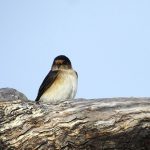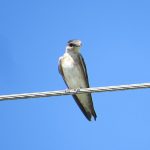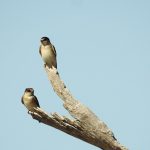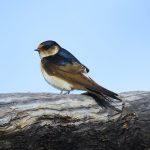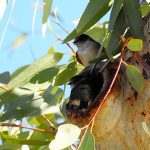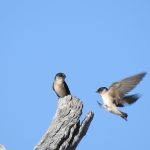TREE MARTIN
The Tree Martin is a small and agile bird, is a delightful sight to behold in the Australian skies. With its glossy blue-black back, creamy underparts, and a slightly forked tail, this avian acrobat is a part of the swallow family, known for their impressive aerial feats.
Tree Martins are found across much of Australia, especially in the open woodlands, grasslands, and near watercourses where they can often be seen swooping gracefully through the air in pursuit of insects. They are quite the travellers, with their presence ranging from the coastal regions of southern and eastern Australia to the inland areas, and as far north as the tropics during certain times of the year.
During the breeding season, which typically occurs from August to January, Tree Martins show a preference for open forests and woodlands, often near water. They are community-minded birds, nesting in colonies where they can be found taking up residence in tree hollows, cliff crevices, or even in man-made structures like culverts and buildings, which offer suitable nooks for their nests.
Outside the breeding season, Tree Martins are more widespread and can be found in a variety of habitats, including urban areas. They are migratory birds, with some populations moving to warmer regions during the cooler months. It’s not uncommon to see them in large flocks during these times, filling the sky with their fluid and coordinated movements.
One of the most remarkable aspects of the Tree Martin’s life is its adaptability. Despite their preference for natural cavities, they have shown remarkable resilience by using artificial structures for nesting, which speaks to their ability to thrive in changing environments. However, their reliance on tree hollows for breeding also highlights the importance of preserving old-growth forests, which are crucial for providing these natural nesting sites.
The Tree Martin is a testament to the beauty and adaptability of Australia’s native birds. Its presence across the continent serves as a reminder of the interconnectedness of ecosystems and the importance of conserving the natural habitats that support such diverse wildlife.

